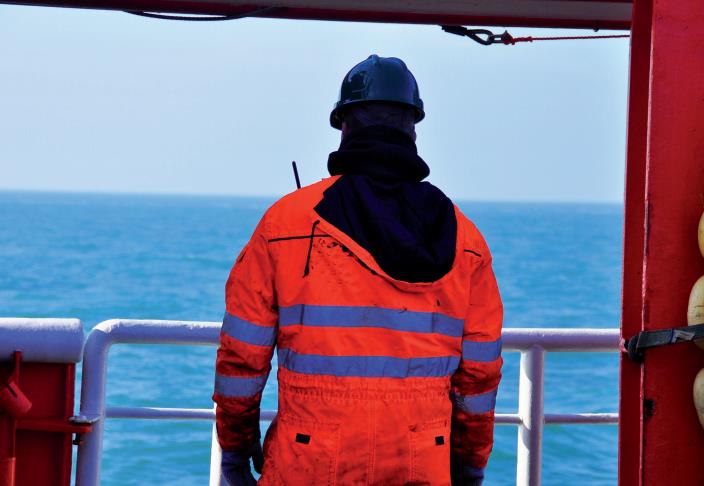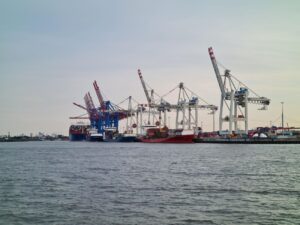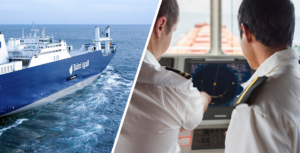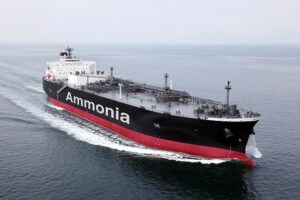Crew change crisis worsens, over 8pct seafarers employed over contract
The number of seafarers onboard vessels beyond the expiry of their contract has risen from 5.8% to 8.8%, which corresponds to a 51,7% relative increase, the Neptune Declaration Crew Change Indicator (NDCCI) shows.

The Covid-19 crisis, increased government restriction and vaccination delays have led to a worsening of the crew change situation.
In the last 11 months, the number of seafarers onboard vessels has also risen, from 0.4% to 1%, corresponding to a 150% relative increase, the Neptune Indicator shows.
The Maritime Labour Convention states that the maximum continuous period a seafarer should serve on board a vessel without leave is 11 months; however, thousands of seafarers remain trapped on ships for more than a year.
“The crew change crisis has been ongoing for more than a year and a half, with the highest cost falling on seafarers and their families’ wellbeing. The situation is going from bad to worse. We need more than lip service from governments, we need concrete action that allows crew changes to be carried out in a safe manner,” said Stephen Cotton, General Secretary, International Transport Workers’ Federation.
Furthermore, vaccine shortages represent one of the major issues, as seafarers continue to have limited access to new doses. So far, vaccination delays have only deepened the problem, causing crewing costs to rise.
Related Article
-
Crewing costs rise due to vaccination delays and travel restrictions
Outlook & Strategy
“Resolving the crew change crisis will require all seafarers to have priority access to vaccines. There has been some progress, for instance in the United States and in parts of Europe, which we welcome, but the vast majority of seafarers are still unable to be vaccinated. It is urgent that countries prioritize the vaccination of international seafarers,” noted Guy Platten, Secretary-General, International Chamber of Shipping.
Signatories of the Neptune Declaration have also called on governments to act on the crew change crisis stating that “without them, 80% of our shopping baskets would be empty.“
“Seafarers play a crucial role in keeping global supply chains running, delivering essential healthcare, foodstuff, consumer products and just in time manufacturing components… We are all indebted to resolve the crew change crisis now. The difficulties in carrying out crew changes can easily be overcome by Governments if they really put their minds to it. Where there is a will, there is a way,” said Jeremy Nixon, CEO, ONE.
“The latest data shows that the crew change crisis is far from over. It is important that all stakeholders work together to deliver on our shared responsibility of protecting seafarers and making sure that they can return home safely,” Kasper Søgaard, Head of Research, Global Maritime Forum added.
Furthermore, the ship managers highlighted the following key developments that have impacted crew changes in the past month:
- Continual high infection rates and subsequent domestic lockdowns are still challenging crew changes and causing disruption to crew movements.
- A decrease of daily inbound flights to the Philippines as well as the travel ban announced by Philippine Government for seafarers traveling from UAE, Oman, Nepal, Bangladesh, Sri Lanka, Pakistan are causing a general disruption to the crew movements.
- Travel restrictions continue to prevent seafarers from going back home and many flights have been cancelled.
- Leading maritime crew nations continue to have low vaccination rates and seafarers continue to have limited vaccine access.
The Neptune Declaration Crew Change Indicator collects aggregated data from 10 top ship managers: Anglo-Eastern, Bernhard Schulte, Columbia Shipmanagement, Fleet Management (FLEET), OSM, Synergy Marine, Thome, V.Group, Wallem, and Wilhelmsen Ship Management, which have about 90,000 seafarers currently onboard.
The indicator is published once a month.








